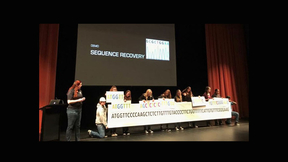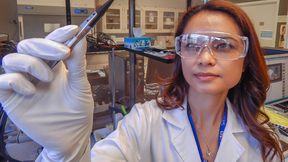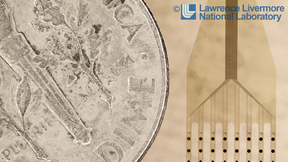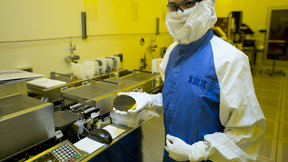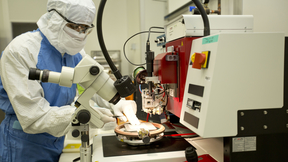Back
That mascara that your colleague is wearing may contain components from a microorganism. Detergents, also known as surfactants, are used extensively in the cosmetics, oil, food, agriculture, healthcare and pharmaceutical industries. Their sales are projected to reach $42 billion by 2020. The majority of surfactants are petrochemicals, i.e. are synthesized from petroleum…
On February 11, hundreds filled the Bankhead Theater in downtown Livermore for a presentation titled “Reconstructing a Rabies Epidemic: Byte by Byte.” As part of Lawrence Livermore National Laboratory’s (LLNL’s) educational outreach program Science on Saturday, the interactive lecture featured biomedical scientist Monica Borucki, bioinformatics scientist Jonathan Allen,…
A team of researchers from Lawrence Livermore and UC Davis have found that covering an implantable neural electrode with nanoporous gold could eliminate the risk of scar tissue forming over the electrode’s surface.The team demonstrated that the nanostructure of nanoporous gold achieves close physical coupling of neurons by maintaining a high neuron-to-astrocyte surface…
LIVERMORE, Calif. – The Defense Advanced Research Projects Agency (DARPA) recently selected Lawrence Livermore National Laboratory (LLNL) to join a collaborative research team that intends to build the world’s first neural system to enable naturalistic feeling and movements in prosthetic hands.Known as Hand Proprioception and Touch Interfaces (HAPTIX), the program seeks to…
Ever wonder what it's like to tap into the human brain? Or did you ponder about the best ways to understand neurological diseases and functions such as memory? Did you know tiny neural devices can potentially help patients see, hear and move?Vanessa Tolosa, an engineer at LLNL's Center for Bioengineering, will be answering those questions and more on the popular social…
LIVERMORE, Calif. - The National Institutes of Health (NIH) awarded Lawrence Livermore National Laboratory (LLNL) a grant today to develop an electrode array system that will enable researchers to better understand how the brain works through unprecedented resolution and scale.LLNL's grant-funded project is part of NIH's efforts to support President Obama's BRAIN (Brain…
LIVERMORE, Calif. - The Department of Defense's Defense Advanced Research Projects Agency (DARPA) awarded Lawrence Livermore National Laboratory (LLNL) up to $2.5 million to develop an implantable neural device with the ability to record and stimulate neurons within the brain to help restore memory, DARPA officials announced this week.The research builds on the…
LIVERMORE, Calif. - Lawrence Livermore National Laboratory recently received $5.6 million from the Department of Defense's Defense Advanced Research Projects Agency (DARPA) to develop an implantable neural interface with the ability to record and stimulate neurons within the brain for treating neuropsychiatric disorders.The technology will help doctors to better understand…


